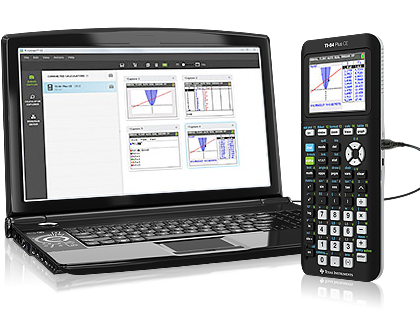

While this article concentrates on modern MMUs, commonly based on pages, early systems used a similar concept for base-limit addressing that further developed into segmentation. Later microprocessors (such as the Motorola 68030 and the Zilog Z280) placed the MMU together with the CPU on the same integrated circuit, as did the Intel 80286 and later x86 microprocessors.

In some early microprocessor designs, memory management was performed by a separate integrated circuit such as the VLSI Technology VI475 (1986), the Motorola 68851 (1984) used with the Motorola 68020 CPU in the Macintosh II, or the Z8010 and Z8015 (1985) used with the Zilog Z8000 family of processors. With virtual memory, a contiguous range of virtual addresses can be mapped to several non-contiguous blocks of physical memory this non-contiguous allocation is one of the benefits of paging.
Ti 84 calculator mac emulator free#
After blocks of memory have been allocated and freed, the free memory may become fragmented (discontinuous) so that the largest contiguous block of free memory may be much smaller than the total amount. Īn MMU also mitigates the problem of fragmentation of memory. Typically, an operating system assigns each program its own virtual address space.
Ti 84 calculator mac emulator software#
In some cases, a page fault may indicate a software bug, which can be prevented by using memory protection as one of key benefits of an MMU: an operating system can use it to protect against errant programs by disallowing access to memory that a particular program should not have access to. The MMU may also generate illegal access error conditions or invalid page faults upon illegal or non-existing memory accesses, respectively, leading to segmentation fault or bus error conditions when handled by the operating system. With some MMUs, there can also be a shortage of PTEs, in which case the OS will have to free one for the new mapping. If no RAM is free, it may be necessary to choose an existing page (known as a "victim"), using some replacement algorithm, and save it to disk (a process called " paging"). The operating system (OS) then handles the situation, perhaps by trying to find a spare frame of RAM and set up a new PTE to map it to the requested virtual address. In this case, the MMU signals a page fault to the CPU. Sometimes, a PTE prohibits access to a virtual page, perhaps because no physical random-access memory (RAM) has been allocated to that virtual page. Ī PTE may also include information about whether the page has been written to (the " dirty bit"), when it was last used (the "accessed bit," for a least recently used (LRU) page replacement algorithm), what kind of processes ( user mode or supervisor mode) may read and write it, and whether it should be cached.

The physical page number is combined with the page offset to give the complete physical address. Other MMUs may have a private array of memory or registers that hold a set of page table entries.

An associative cache of PTEs is called a translation lookaside buffer (TLB) and is used to avoid the necessity of accessing the main memory every time a virtual address is mapped. Most MMUs use an in-memory table of items called a " page table", containing one " page table entry" (PTE) per page, to map virtual page numbers to physical page numbers in main memory. The upper address bits are the virtual page numbers. The bottom bits of the address (the offset within a page) are left unchanged. Modern MMUs typically divide the virtual address space (the range of addresses used by the processor) into pages, each having a size which is a power of 2, usually a few kilobytes, but they may be much larger. Schematic of the operation of an MMU : 186 ff.


 0 kommentar(er)
0 kommentar(er)
